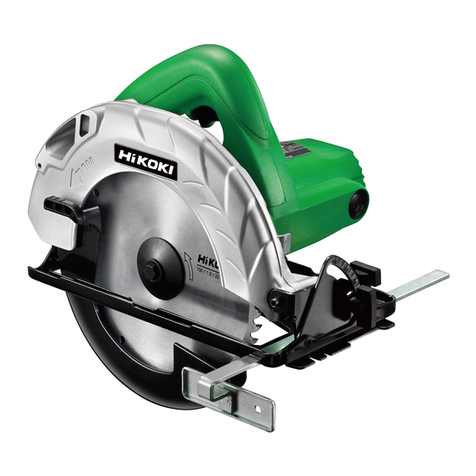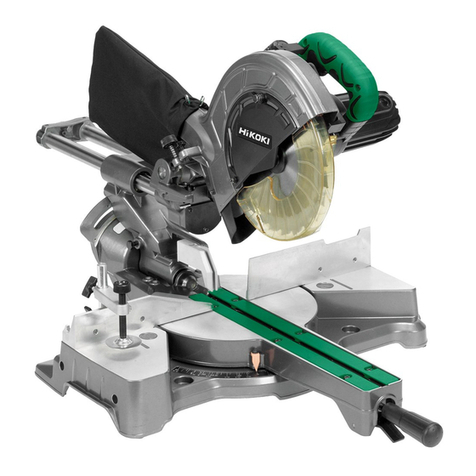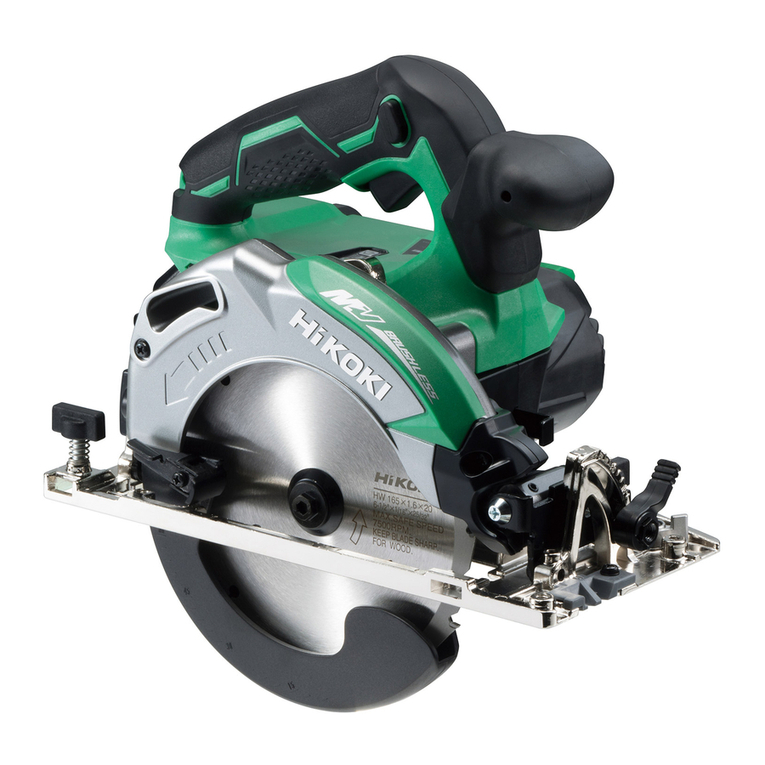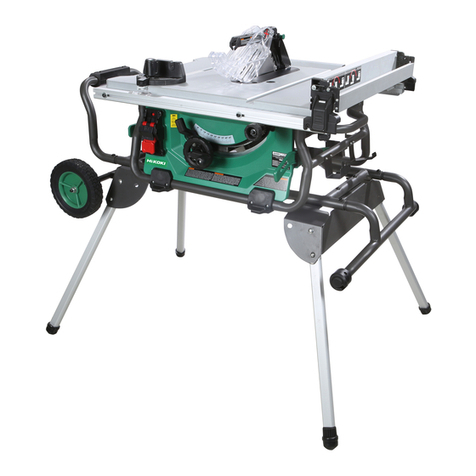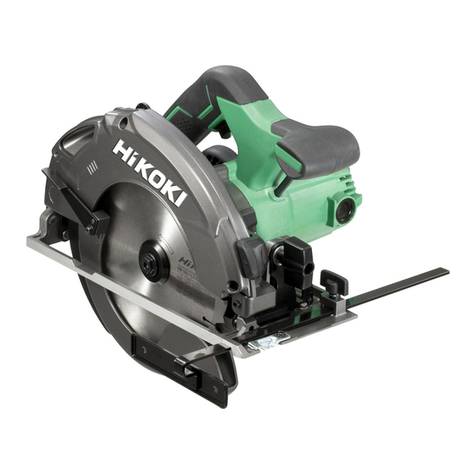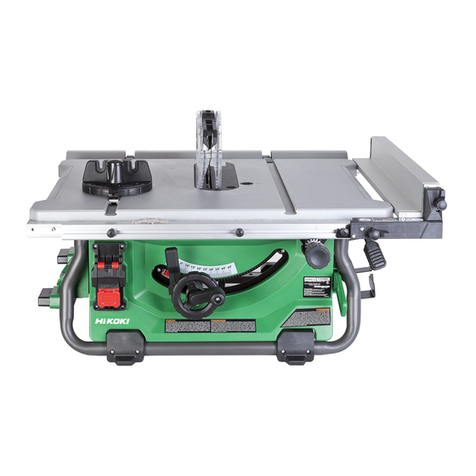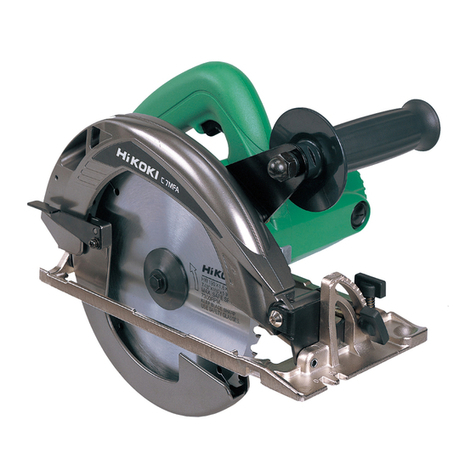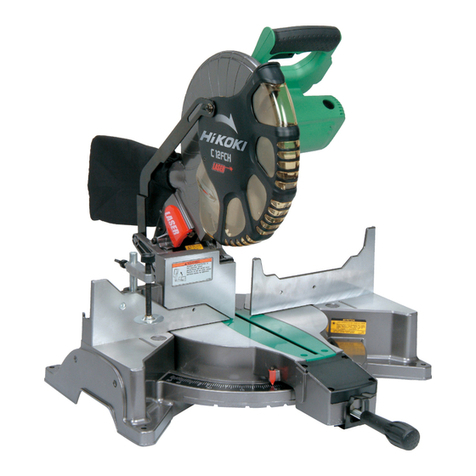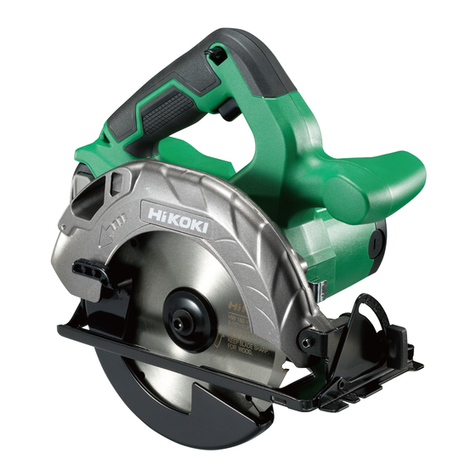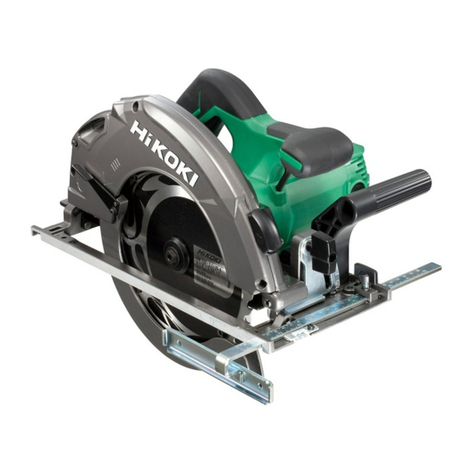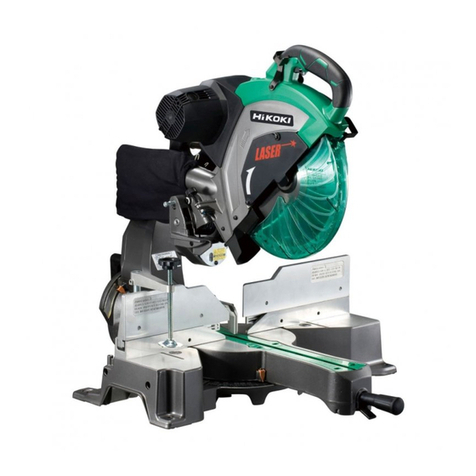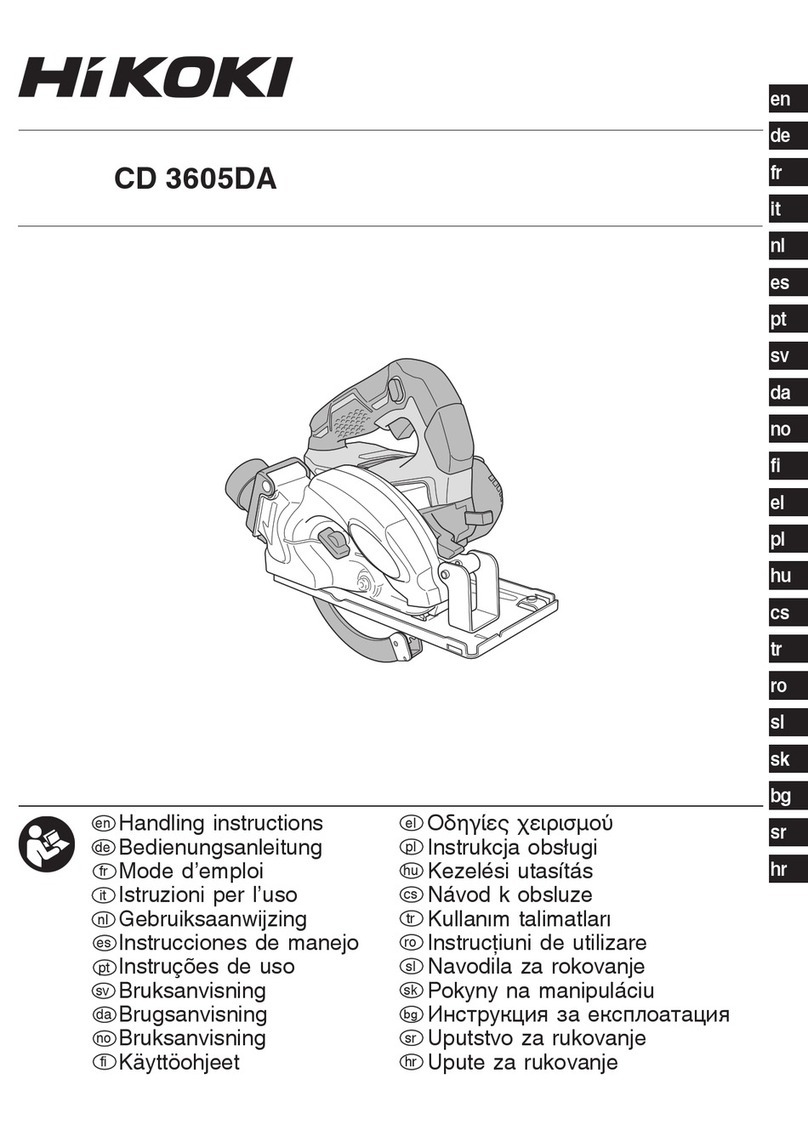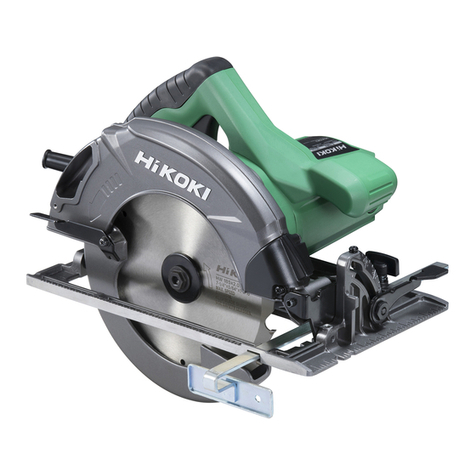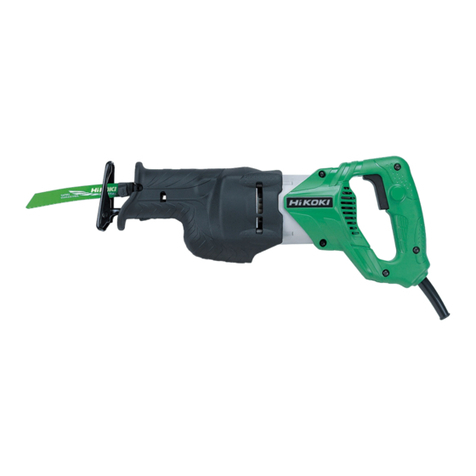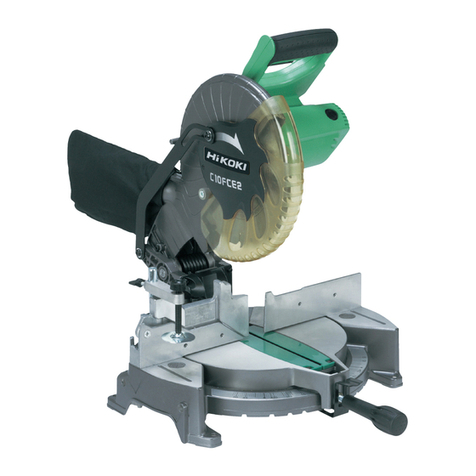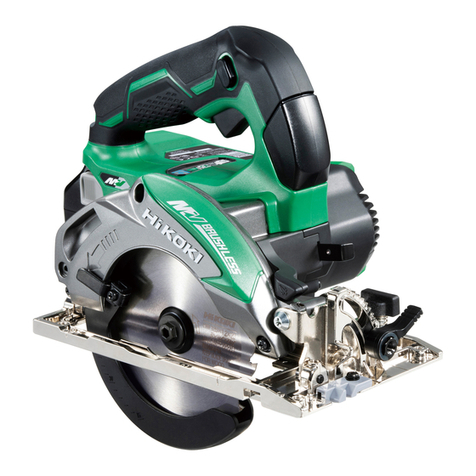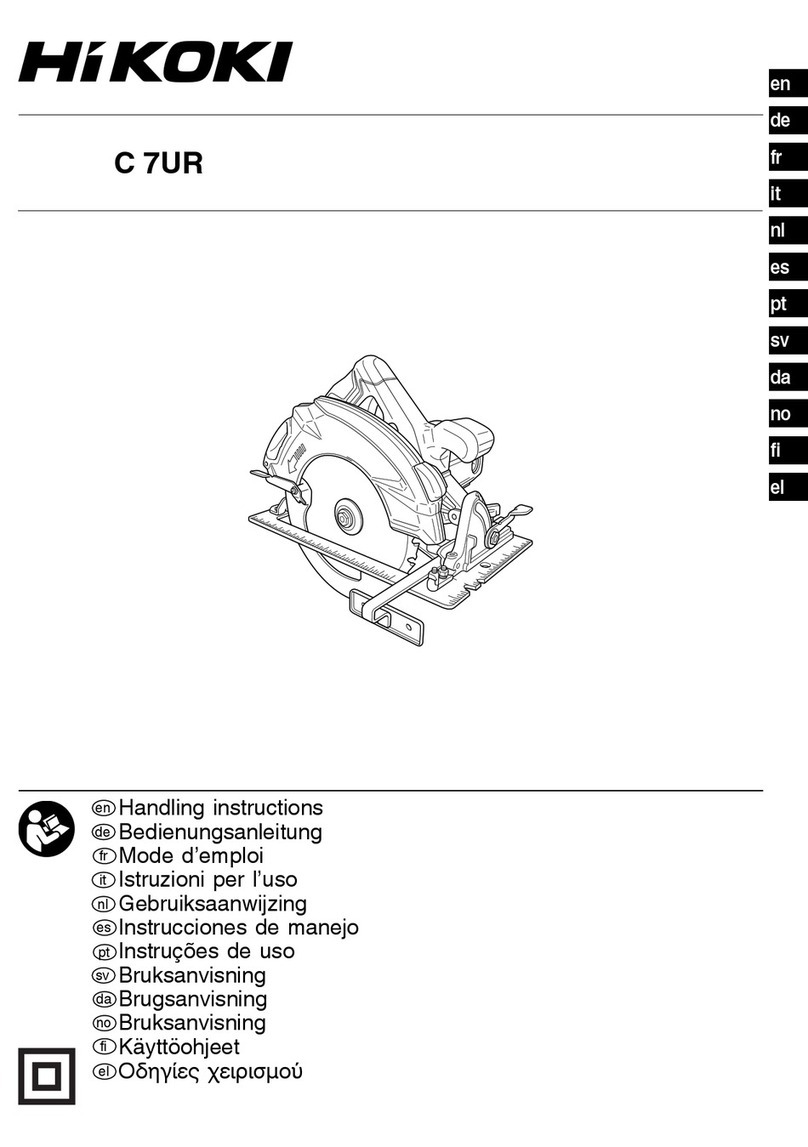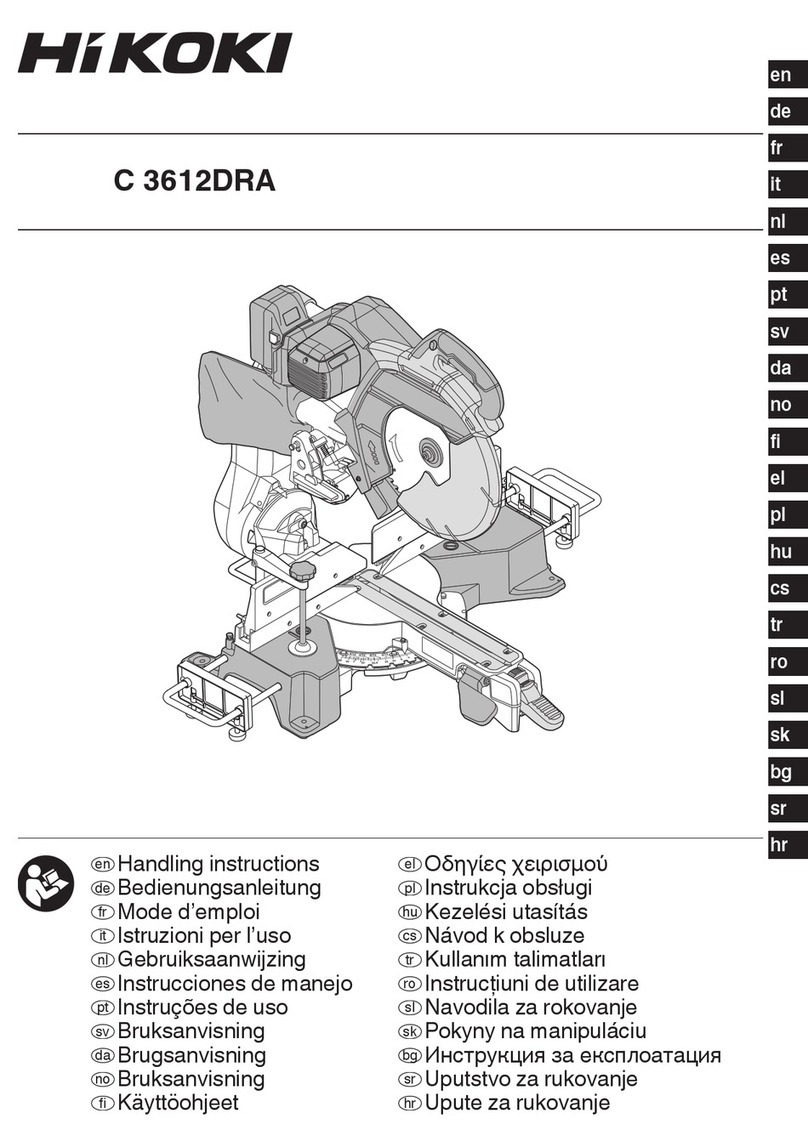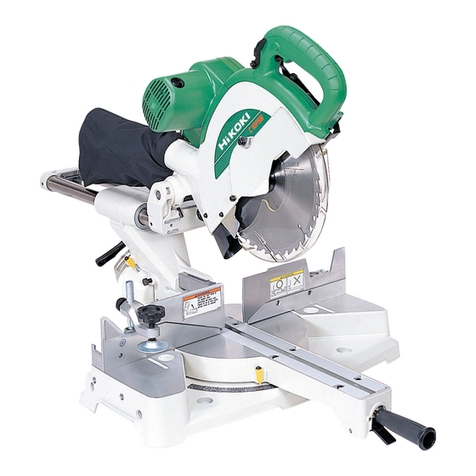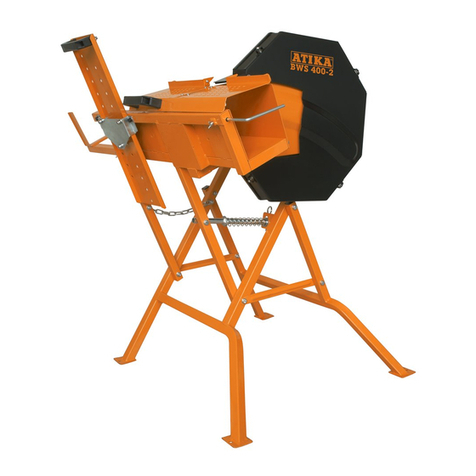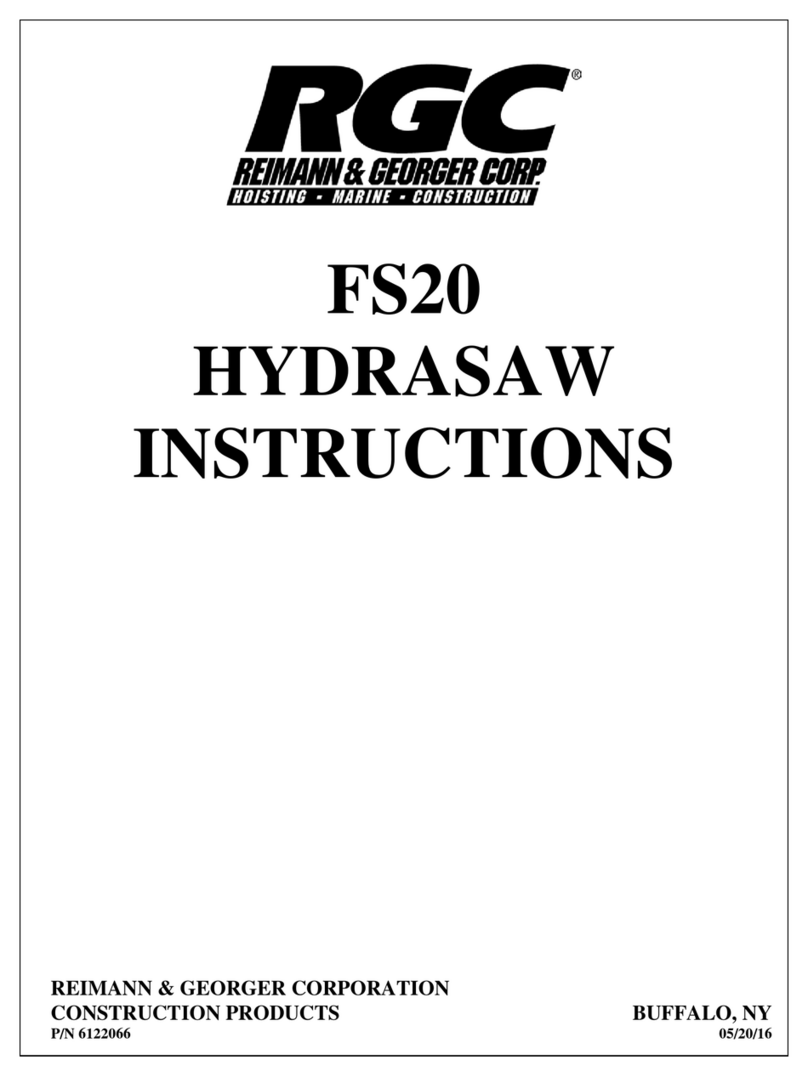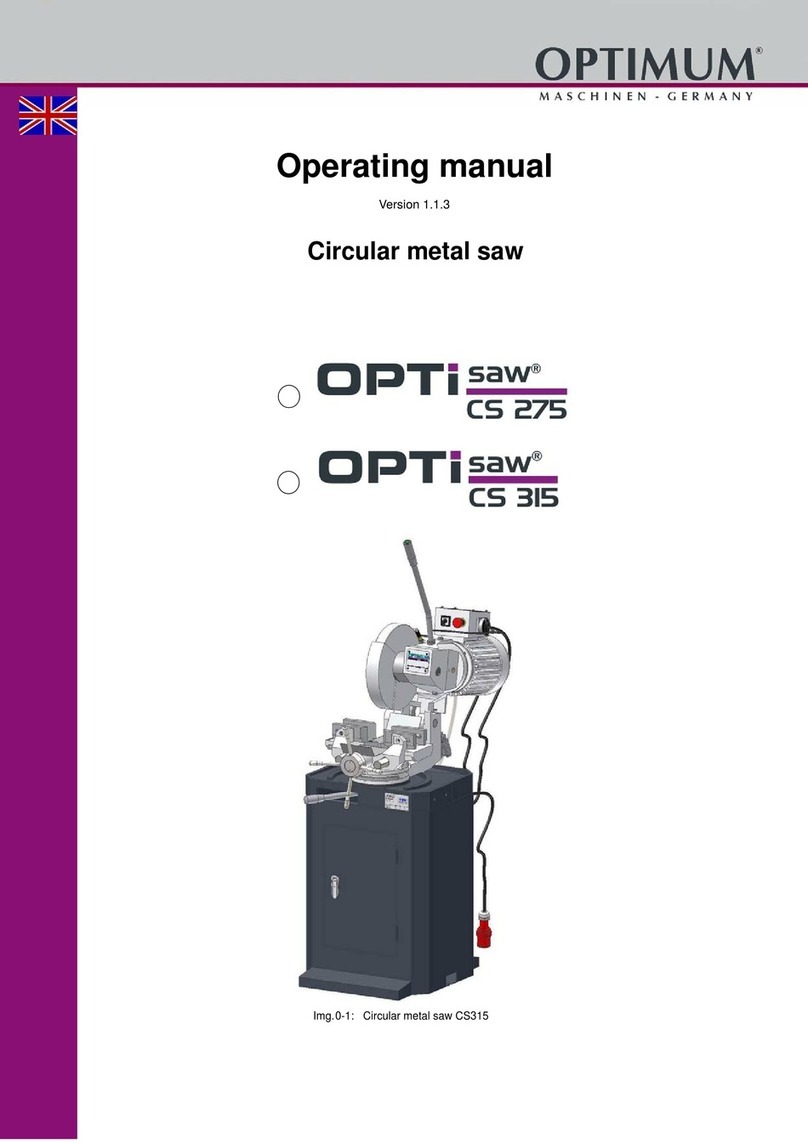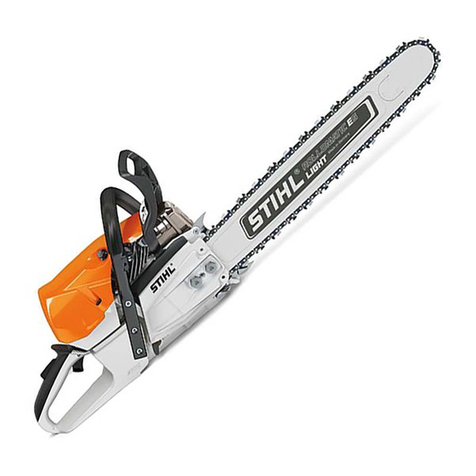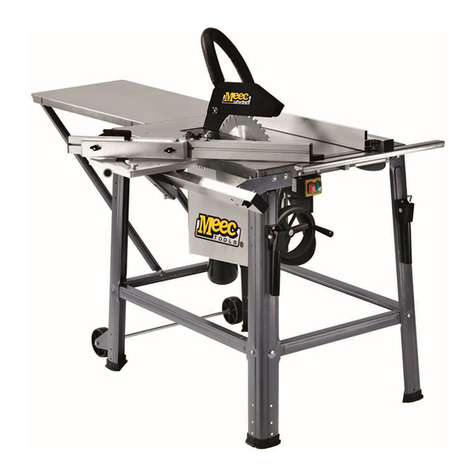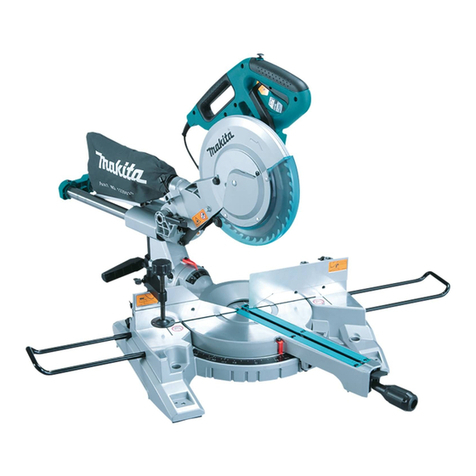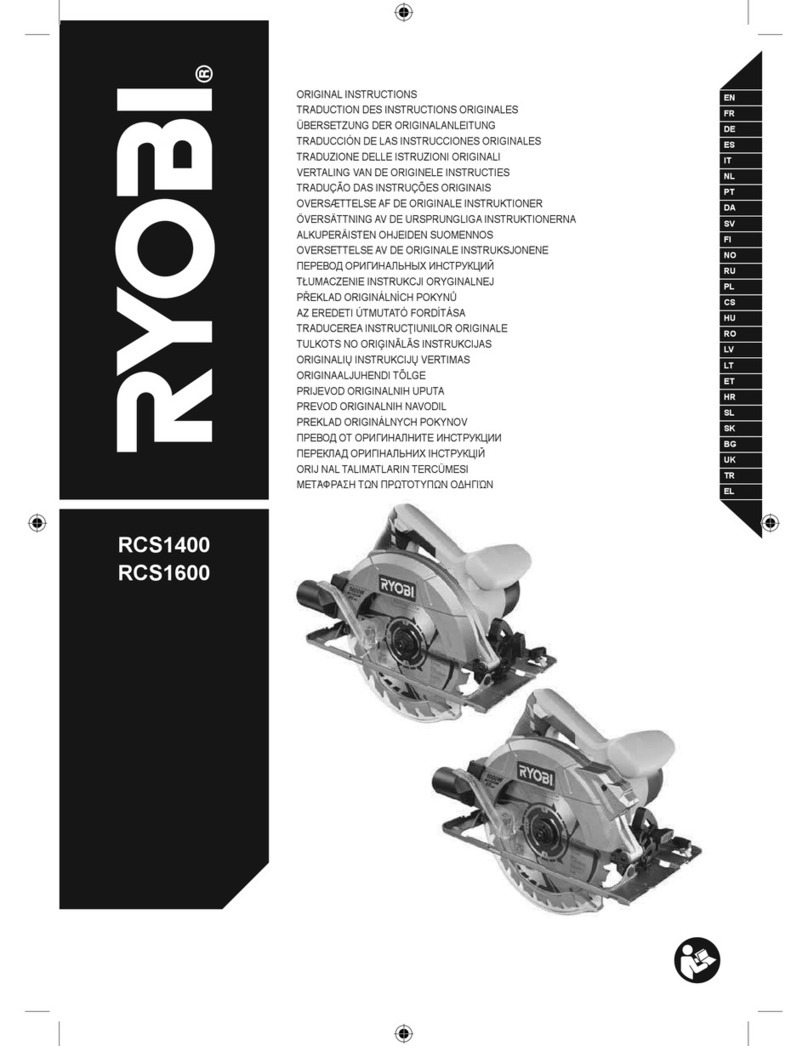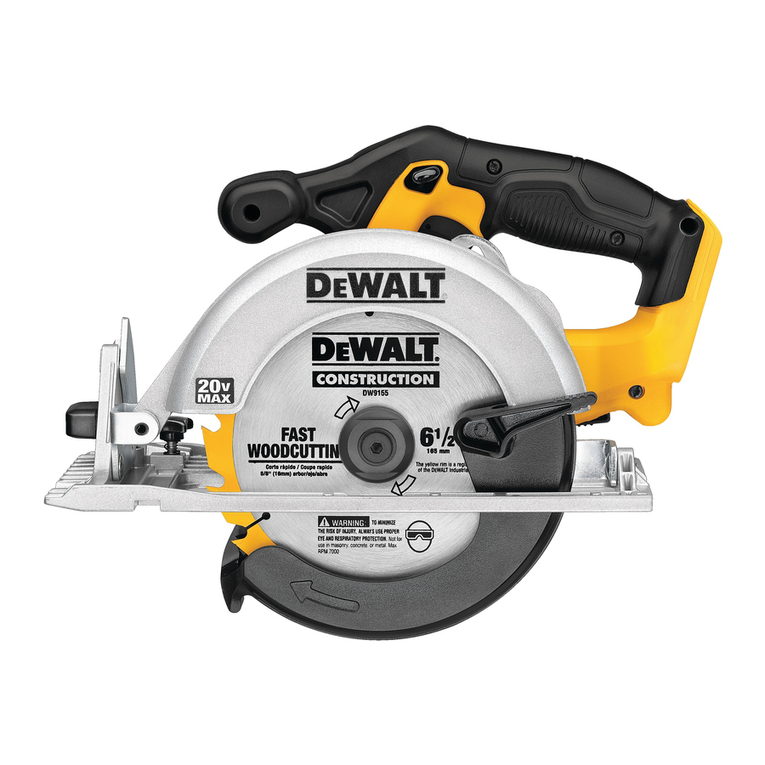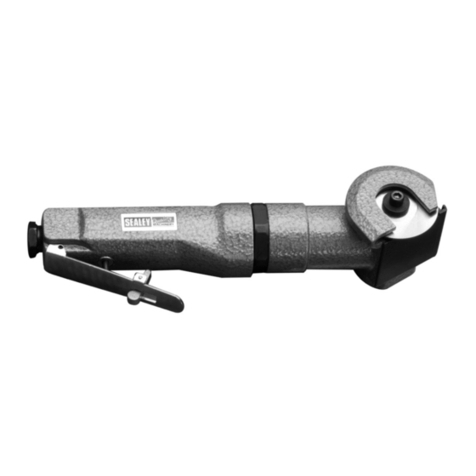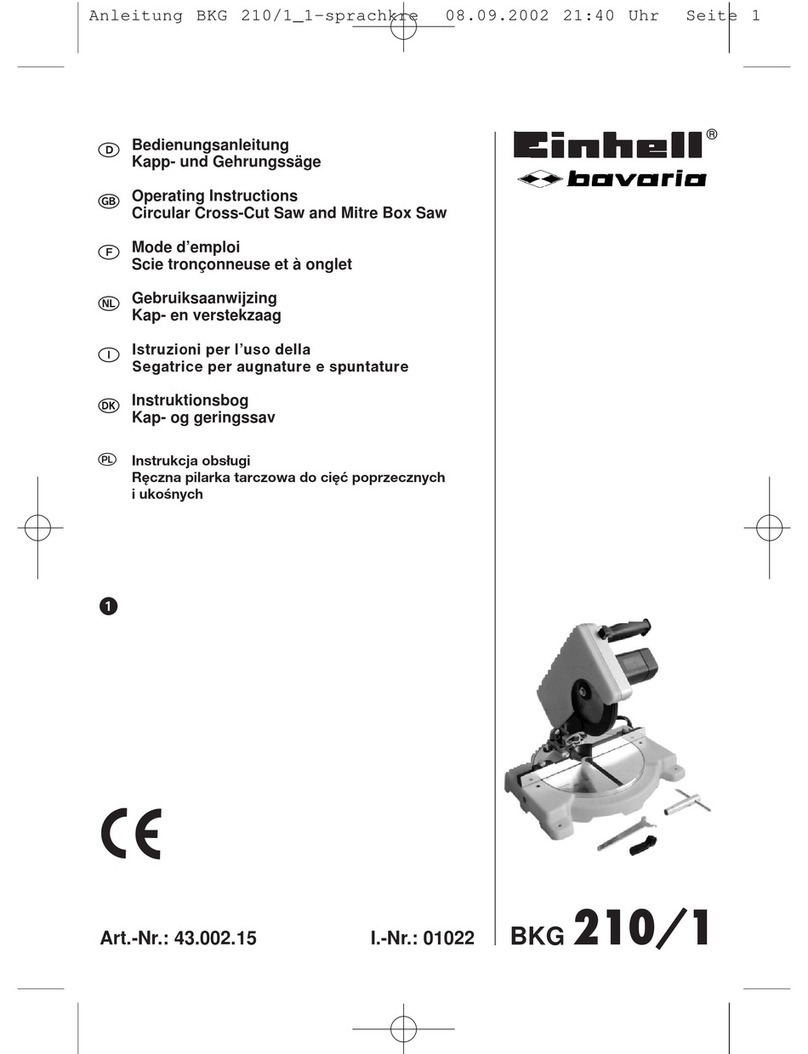
9
e) Do not use dull or damaged blades.
Unsharpened or improperly set blades produce narrow
kerf causing excessive friction, blade binding and
kickback.
f) Blade depth and bevel adjusting locking levers
must be tight and secure before making the cut.
If blade adjustment shifts while cutting, it may cause
binding and kickback.
g) Use extra caution when sawing into existing walls
or other blind areas.
The protruding blade may cut objects that can cause
kickback.
Lower guard function
a) Check the lower guard for proper closing before
each use. Do not operate the saw if the lower guard
does not move freely and close instantly. Never
clamp or tie the lower guard into the open position.
If the saw is accidentally dropped, the lower guard may
be bent. Raise the lower guard with the retracting handle
and make sure it moves freely and does not touch the
blade or any other part, in all angles and depths of cut.
b) Check the operation of the lower guard spring. If
the guard and the spring are not operating properly,
they must be serviced before use.
Lower guard may operate sluggishly due to damaged
parts, gummy deposits, or a build-up of debris.
c) The lower guard may be retracted manually only for
special cuts such as “plunge cuts” and “compound
cuts”. Raise the lower guard by the retracting
handle and as soon as the blade enters the material,
the lower guard must be released.
For all other sawing, the lower guard should operate
automatically.
d) Always observe that the lower guard is covering
the blade before placing the saw down on bench or
floor.
An unprotected, coasting blade will cause the saw to
walk backwards, cutting whatever is in its path. Be aware
of the time it takes for the blade to stop after switch is
released.
ADDITIONAL SAFETY WARNINGS
1. Do not allow foreign matter to enter the hole for
connecting the rechargeable battery.
2. Never disassemble the rechargeable battery and
charger.
3. Never short-circuit the rechargeable battery.
Shortcircuiting the battery will cause a great electric
current and overheat. It results in burn or damage to the
battery.
4. Do not dispose of the battery in fire. If the battery is burnt,
it may explode.
5. When using this unit continuously, the unit may overheat,
leading to damage in the motor and switch. Please leave
it without using it for approximately 15 minutes.
6. Do not insert object into the air ventilation slots of the
charger. Inserting metal objects or inflammables into the
charger air ventilation slots will result in electrical shock
hazard or damaged charger.
7. Using an exhausted battery will damage the charger.
8. Bring the battery to the shop from which it was purchased
as soon as the post-charging battery life becomes too
short for practical use. Do not dispose of the exhausted
battery.
9. Wear earplugs to protect your ears during operation.
10. Use only blade diameter specified on the machine.
11. Do not use any abrasive wheel.
12. Do not use saw blades which are deformed or cracked.
13. Do not use saw blades made of high speed steel.
14. Do not use saw blades which do not comply with the
characteristics specified in these instructions.
15. Do not stop the saw blades by lateral pressure on the
disc.
16. Always keep the saw blades sharp.
17. Ensure that the lower guard moves smoothly and freely.
18. Never use the circular saw with its lower guard fixed in
the open position.
19. Ensure that the retraction mechanism of the guard
system operates correctly.
20. Never operate the circular saw with the saw blade turned
upward or to the side.
21. Ensure that the material is free of foreign matters such as
nails.
22. The saw blades range should be from 165 mm to
162 mm.
23. Pull out battery before carrying out any adjustment,
servicing or maintenance.
24. Be careful of brake kickback.
This circular saw features an electric brake that functions
when the switch is released. As there is some kickback
when the brake functions, be sure to hold the main body
securely.
25. Ensure that the switch is in the OFF position. If the battery
installed to power tool while the switch is in the ON
position, the power tool will start operating immediately,
which could cause a serious accident.
26. Avoid cutting in the state where the base has floated up
from the material.
When blade is binding, or when interrupting a cut for any
reason, release the trigger and hold the saw motionless
in the material until the blade comes to a complete
stop. Never attempt to remove the saw from the work
or pull the saw backward while the blade is in motion or
KICKBACK may occur. Investigate and take corrective
actions to eliminate the cause of blade binding.
27. Support large panels to minimize the risk of blade
pinching and KICKBACK. Large panels tend to sag
under their own weight (Fig. 3). Supports must be
placed under the panel on both sides, near the line of cut
and near the edge of the panel as shown in Fig. 2.
To minimize the risk of blade pinching and kickback.
When cutting operation requires the resting of the saw
on the work piece, the saw shall be rested on the larger
portion and the smaller piece cut off.
28. Use extra caution when making a “Pocket Cut” into
existing walls or other blind areas. The protruding blade
may cut objects that can cause KICKBACK.
NEVER place your hand or fingers behind the saw
(Fig. 4). If kickback occurs, the saw could easily jump
backwards over your hand, possibly causing severe
injury.
29. WARNING: It is important to support the work piece
properly and to hold the saw firmly to prevent loss
of control which could cause personal injury. Fig. 5
illustrates typical hand support of the saw.
30. Place the wider portion of the saw base on that part
of the work piece which is solidly supported, not on
the section that will fall offwhen the cut is made. As
examples, Fig. 6 illustrates the RIGHT way to cut offthe
end of board, and Fig. 7 the WRONG way. If the work
piece is short or small, clamp is down.
DON’T TRY TO HOLD SHORT PLACES BY HAND!
31. Never attempt to saw with the circular saw held upside
down in a vise. This is extremely dangerous and can
lead to serious accidents (Fig. 8).
32. When using the guide, do not attempt an inclined cut
which would allow the cut material to slip between the
saw blade and guide. Doing so could result in injury.
(Fig. 12)
00BookC1806DAAUST.indb900BookC1806DAAUST.indb9 2021/05/1210:23:542021/05/1210:23:54

